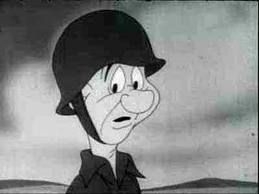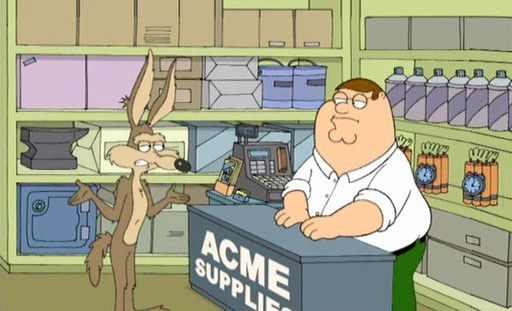“Our house is on fire.
You guys are the fire department. I don’t care how you put the fire out, just that you get it out and we can recover.”
Steve and I were walking through the floor operations of his new distribution center, about 30 minutes after I first arrived in the facility. I could hear the tension in his voice as we spoke about how the start-up of operations was failing. As General Manager of the new DC, Steve’s career was in jeopardy. With an even temper typical of big men, Steve did not show much emotion, except the look of grim determination that come hell or high water, things would get better.
 Jumping back about four weeks before this walk with Steve, I walked the same facility with another manager, inspecting the facility to see if the operations were ready for the activation inspection by the local US Customs and Border Protection Port Director. I was helping the company start up Foreign Trade Zone operations in the DC. After a day of FTZ Operations Manual review with the new Zone Manager, we walked through the operations floor of the DC. What I saw was frightening. The facility was in no way ready for the Port Director. As I walked through the warehouse, people started to approach me with clipboards of paperwork, asking questions about where things were or what the paperwork meant. I asked the people, “Where is your supervisor or manager?”
Jumping back about four weeks before this walk with Steve, I walked the same facility with another manager, inspecting the facility to see if the operations were ready for the activation inspection by the local US Customs and Border Protection Port Director. I was helping the company start up Foreign Trade Zone operations in the DC. After a day of FTZ Operations Manual review with the new Zone Manager, we walked through the operations floor of the DC. What I saw was frightening. The facility was in no way ready for the Port Director. As I walked through the warehouse, people started to approach me with clipboards of paperwork, asking questions about where things were or what the paperwork meant. I asked the people, “Where is your supervisor or manager?”
“We don’t know. Last time we saw him was at the start of the shift.”
That afternoon, as I waited for my flight home, I called my client, breaking the bad news to him that the facility was not ready. I shared with him what I saw. I could tell that he thought that I was exaggerating. After the call, I wrote up a simple report, including photographs of what I saw. After I got home, I sent the report, expecting the client to address it internally with his team. That was on a Friday.
My client called Monday afternoon. “Thank you for that report,” Lee said. “I hate you for it.”
“Why hate me? What for?” I asked.
“Because now I have to go there and fix it,” said Lee. We spoke about his plans and expectations. He figured it would take a few weeks to fix, no more, that it was simply a management issue. He thought that the operations needed management to give more direction. I offered our assistance, as “fixing problems” was one of our services. “No, we must fix it ourselves,” Lee shared.
Three weeks later, Lee called. “This is much worse than you could imagine. We can’t make progress. I need your help,” Lee said. “We don’t need consultants, we need managers, leaders who can come in and take over the floor operations. Our own team is a wreck, they are worn out. We don’t need to be told what to do, we need people who know what to do and can make it happen. Can you help us?”
I told Lee we could help. It took a day to put together an A-Team, selecting three other people from my roster of top operators that were both retired and working contract positions. The following Monday morning two of us landed and one hour later I was walking through the facility with the General Manager, Steve.
The house was on fire. Over $19 million in shipment volume was part due, representing over 8,000 orders. Over 500 inbound containers marinated in container yards between Missouri and California, unable to move because there was no room in the facility to receive the goods. There were over 230 people working over two extended hours shifts. Outbound shipments clogged the dock, shutting off access to many of the doors. Inbound cases of hardware and machine parts clogged the receiving docks. Piles of inventory on pallets covered over 2,000 square feet of floor space in an area called the bone pile.
The DC was in sorry shape. It had opened only eight weeks before, a consolidation of operations form two different cities. The Denver Operations moved in first. Some of the operations in Kansas City moved, and then stopped as things started to fall apart in the start-up. Multiple root causes put the new DC into this condition, some of them reversible, some not. In any case, there was no moving back. Our job was to lead this demoralized operations team out of the mess.
Seven weeks later – the worst was behind them, and our little A-Team packed our bags and headed home. In seven weeks, we helped lead the team to turn the operations around, breaking company shipping records in the process, rebuilding the spirit of the team on the floor and the management team. Working shoulder to shoulder with the managers and employees, together we turned the operations around. They were not out of the woods, but ready to move forward.
This experience is not the only time clients hired DKS&CO to come in and help fix a bad situation. We fight fires for our clients when things get out of hand. We'd had a good mental playbook to follow to fix farked up and to keep problems from happening when this project happened. This project inspired us to write an actual playbook.
The “Are You Taking Notes” series became part of our playbook. Some of the articles and stories are from actual memos that we wrote to the client to illustrate what was happening. Some of the articles are from after the project, as we developed the series. The series focuses on the basics of assuring that a new operation has the opportunity to succeed.
Articles in This Series
Articles in This Series

Situation: Abnormal & Fouled Up
Start-up distribution centers are a real bitch to get right. I should know, I have worked at over a dozen of them. They all have problems—a lack of training, a lack of labor, a lack of management, a lack of time; it is "the lacks" that get in the way. The biggest lack in a start-up is the lack of discipline, of consistency of execution. It is the failure to be consistent that wrecks start-ups and management often fails to recognize that the lack of consistent execution is the root cause of most problems. Read More
Masquerading Processes
“While everyone talks about the importance of flow in the process in meetings and conference calls, what happens on the floor is anything but flow. What we see on the floor is a manufacturing process, not a distribution process. Distribution processes don't use batches like manufacturing. Distribution processes, while sequential in execution, appear to flow like a river, breaking the work into smaller and smaller work units until the activity looks like water.” Read More

Define Your Victory
“Sun Tzu said: ‘The victor defines victory before taking the battlefield; the vanquished first engages in battle, later to look for victory.’ If this team is going to achieve victory, we must define what victory is, and then tell the team what is victory." Read More

How Do You Deal Change?
Your boss just came in and told you that the company is going to outsource much of the function in your department. He said not to worry, that your job is safe, but two thirds of the people working for you are going to “go away” once the outsourcing is done. Read More

Who are “They”?
I stood there listening to the folks on the first shift picking and labeling teams complaining about the work that the second shift had done overnight. At first, I could not understand what was wrong. It looked like they had staged the picked product correctly. Read More


